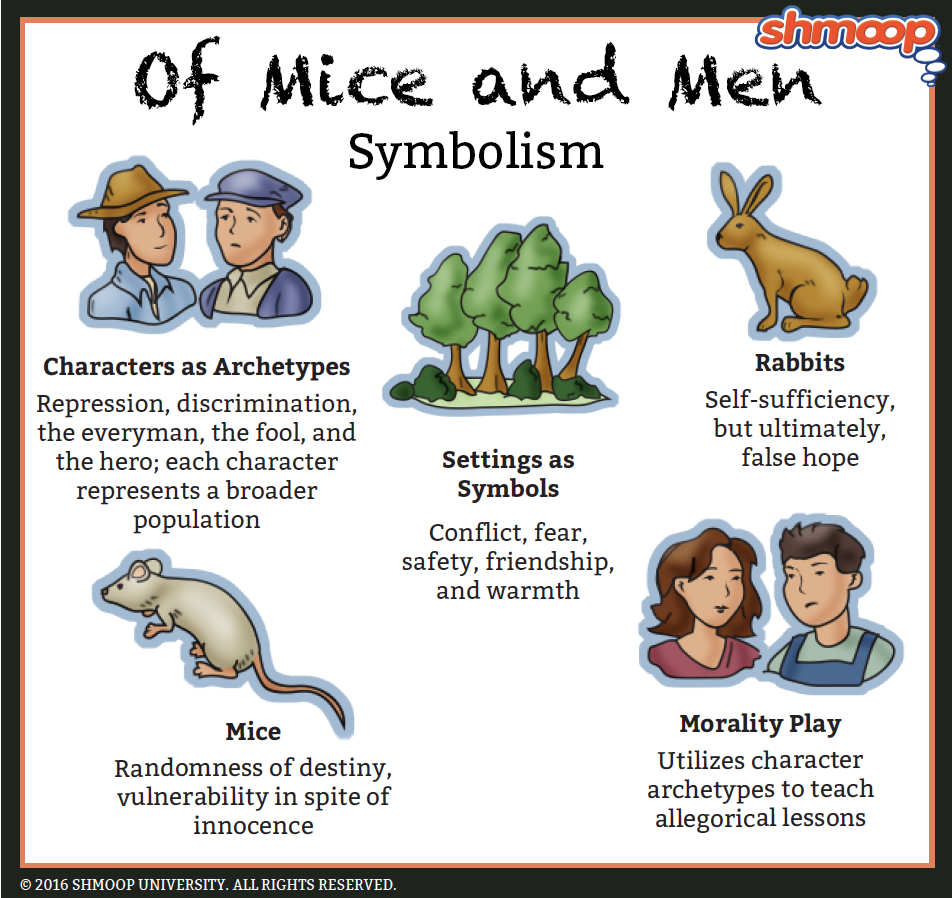Symbolism, Imagery, Allegory

(Click the symbolism infographic to download.)
In the European medieval period, all the kids were going nuts for a type of drama called a morality play, in which the hero (often a guy named, cleverly, Everyman) encounters various human attributes in the guise of people trying to convince him to stay on the path to God. So, for example, a character named Vice might try to tempt Everyman away from God, while a character named Justice might remind him that he really wants to stay on God's good side.
Of Mice and Men like a straight allegory, but it still has the quality of a morality play. George is our Everyman, and the ranch is populated by people who are as much representations of groups of people or attitudes toward life as they are character in themselves. Let's take a look at our handy-dandy list:
- George = "the everyman"—the type of normal, average person who is found everywhere and whose feelings and actions are neither exceptional nor terrible.
- Lennie = the archetypal "wise fool," who is mentally challenged but able to reveal the best and the worst of others. Lennie's foolishness often allows him to speak honestly where others won't, and he sometimes taps into things that "normal" people can't (like the fact that the ranch isn't a good place for him and George to be hanging out).
- Slim = the hero, king, or leader.
- Curley's wife = Eve—the female character who, in the Biblical story, brings sin and death to the world. Also, all women, everywhere.
- Curley = inferior people who overcompensate.
- Crooks = all black people, everywhere.
- Candy and Carlson = workers who are destroyed by their jobs.
Read as a morality play, Of Mice and Men stops being a Depression-era slice of real depression (LOL) life, and more of a universal story about how to be a man. (And how not to be a woman.)